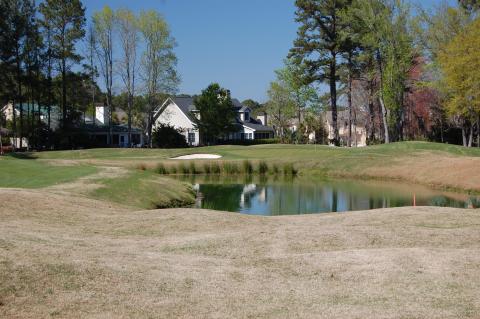
Resale homes with views of one of the two courses at Dataw Island (by Arthur Hills and Tom Fazio) begin in the mid $200s. With 20% down and a conventional 30-year mortgage, monthly payments on such a home could be just a little over $1,000, certainly competitive with rental payments on similar properties.
In 1978, I purchased my first home for one reason, and one reason only: It was cheaper than renting. A year earlier, I had been transferred by my employer, J.C. Penney Company, from New York City to the company's southeast regional office in Atlanta. My (now former) wife, our one-year-old son and I moved into a nice two-bedroom apartment just north of the city. The rent, as I recall, was something like $650 a month.
On weekends we would strap the baby into the car and drive through the country north and west of the city. One Saturday we found ourselves in a new development, Timber Bluff, located midway between Marietta and Roswell, GA. The surrounding area was quite rural but Timber Bluff was only a 35-minute commute to my job in downtown Atlanta.
First home for $42,000
Just for kicks, we stopped in Timber Bluff's sales office and asked about the price of the homes and, rubes that we were, were shocked to find out thatI recalled this bit of personal history as I read an article about homes selling in Sacramento, CA, to renters because their monthly mortgage payments would be less than their rent payments. The market yes men are fairly frothing at the mouth over the increased sales in depressed markets like Sacramento where prices fell early and fell hard. Rabid promoters, mostly real estate people who
Sales activity in depressed markets like Sacramento and numerous others is essentially irrelevant to the prices most of us will get for our homes when we sell. As the ad says, what happens in Vegas stays in Vegas. Activity there is no predictor of activity in Boston, Indianapolis, Dubuque or Albany. Until employment stabilizes and businesses start transferring people again, until the threat of inflation (from bailouts and bloated government budgets) abates, and until the era of stock market volatility ends, we will not see anything approaching the glory years of real estate for some years to come.
No time like the right time to sell and buy (and maybe the right time is now)
I tend to trust more the stories about increased sales activity from more stable markets, and many of them are in the southern U.S. Real estate professionals I know are reporting increased activity, if not increased prices, in a number of areas I have visited and reviewed. Some of this
The advice remains: If you have equity in your home and a plan to move to a warm-weather retirement home, there is zero reason to wait. The value of your current home is not likely to rise any faster than the one you would move to; sheer demographics implies that homes north of the Mason/Dixon line will appreciate more slowly than those south of the line, even in the rosiest of forecasts.
The size of the Baby Boomer generation has not shrunk much, and pure demographic inertia will increase the competition for the best value homes in the south. It may take Miami years, maybe decades, to recover from its housing woes, but most of the rest of the south will rise again.























